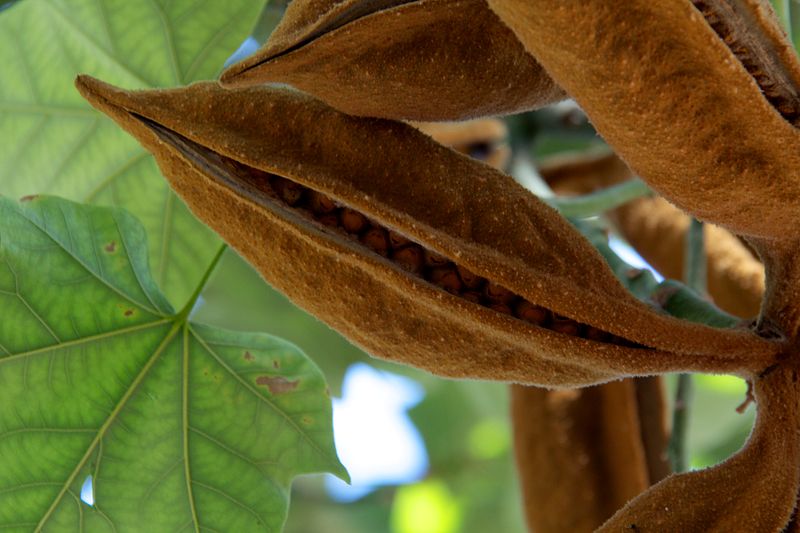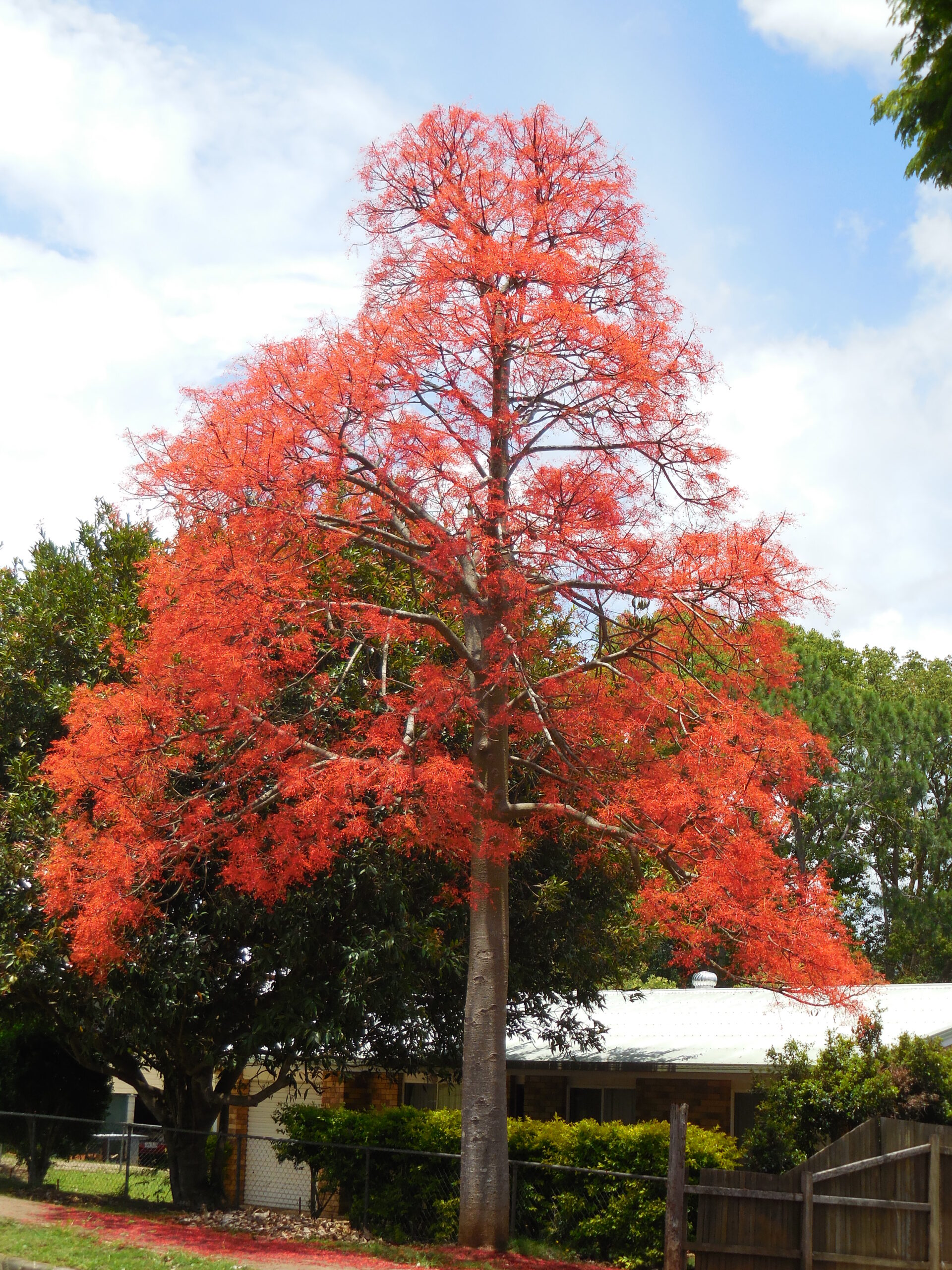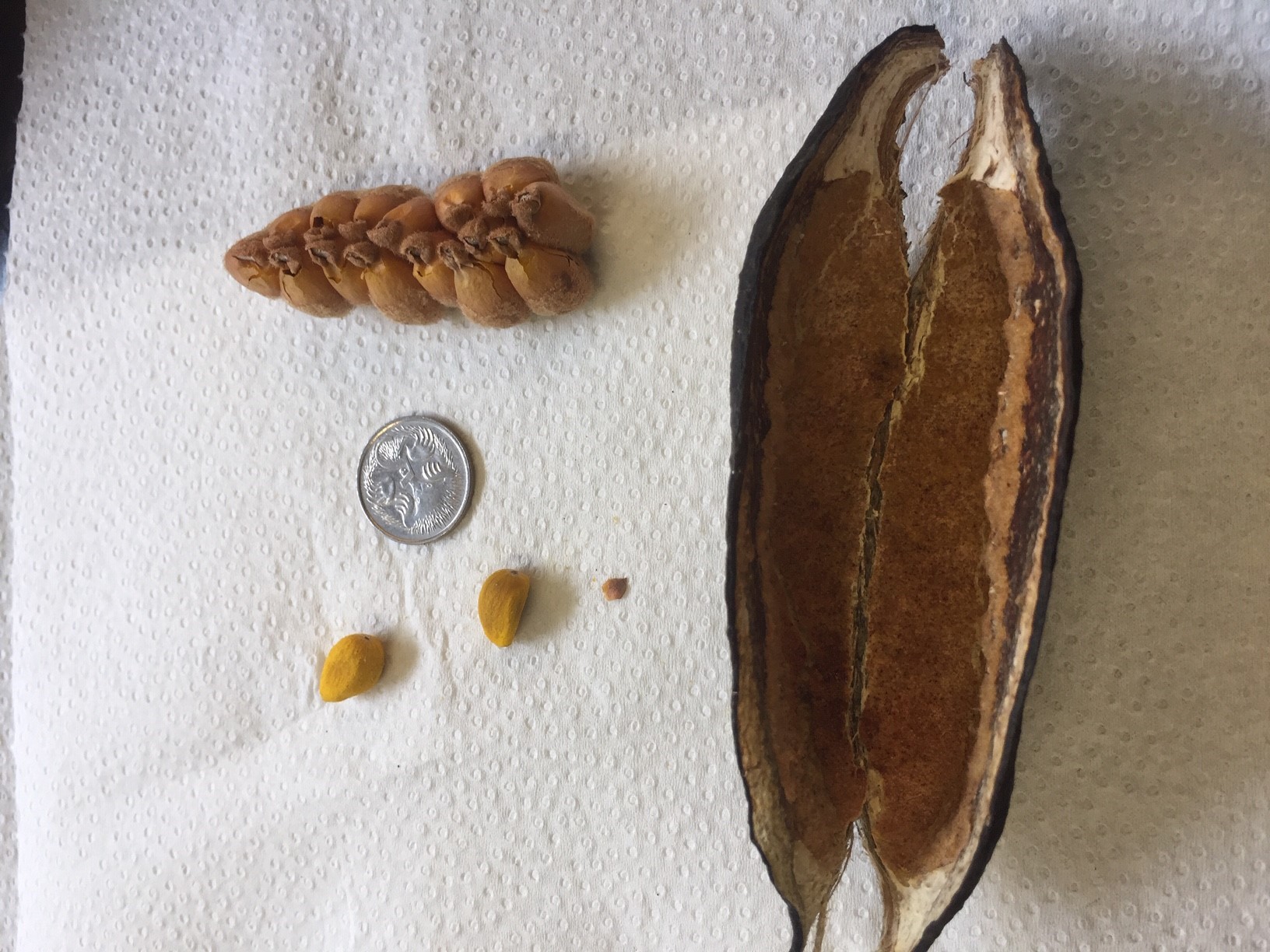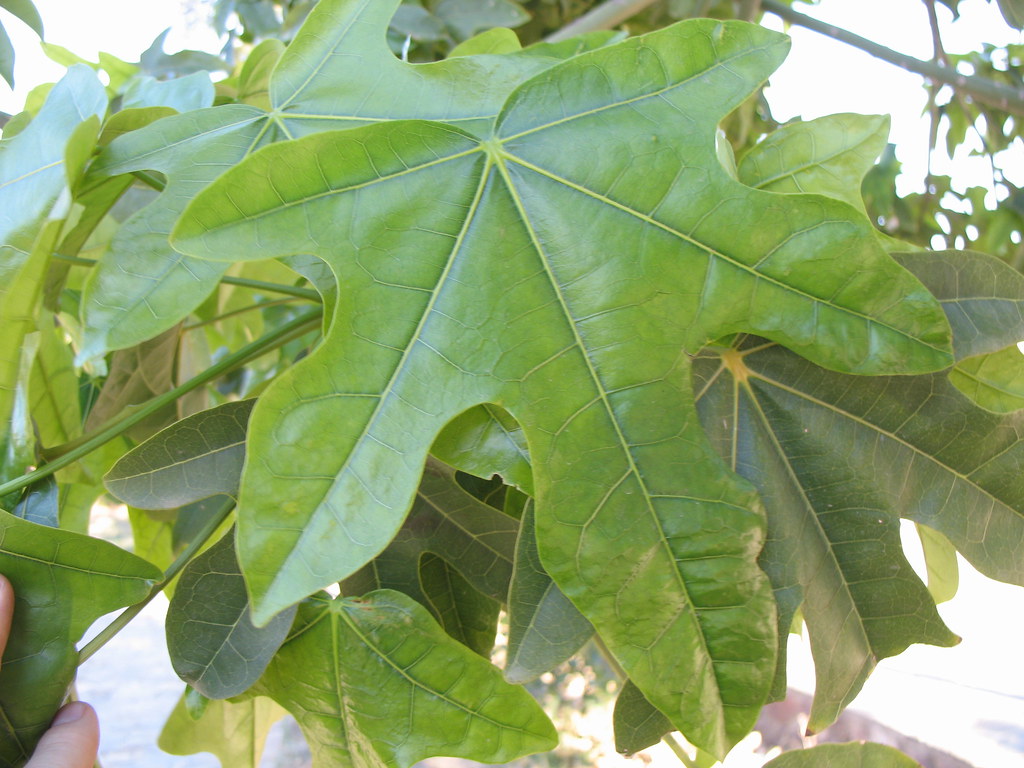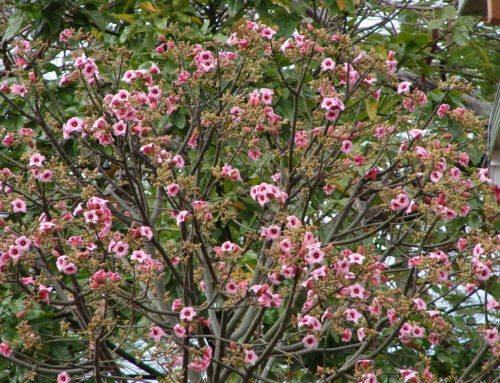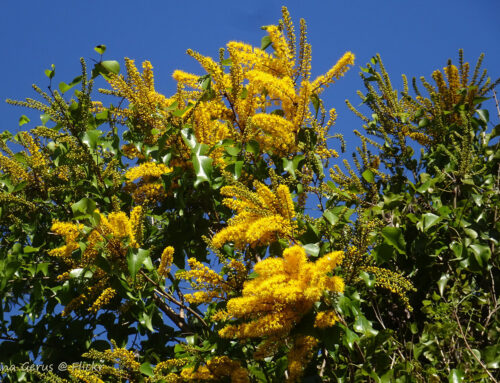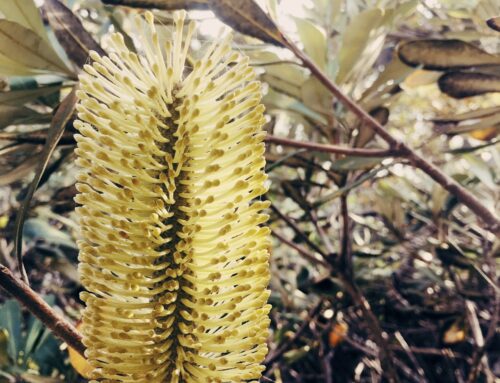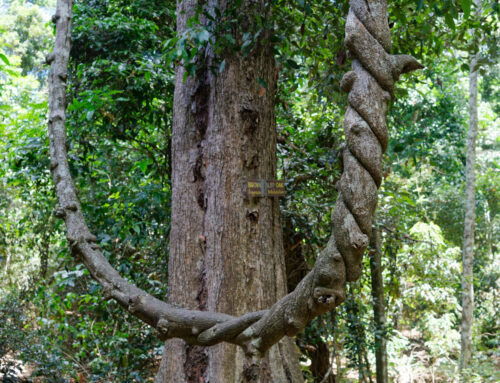Family: Malvaceae
Pronunciation: Brachychiton (brack-ee-KY-ton) acerifolius (ay-sir-ah-FOAL-ee-us)
Brachychiton acerifolius, commonly known as the Flame Tree, native to subtropical regions of eastern Australia.
Renowned for its spectacular display of bright red flowers, which cover the entire tree canopy in late spring and early summer, is a striking deciduous tree.
Description:
- Growth: Reaches up to 30–40 meters in natural settings but typically grows smaller, around 10–15 meters, in cultivated landscapes. Straight trunk with smooth, greyish bark. In older trees, the bark may become slightly fissured.
- Leaves: Vary in shape and size, typically 10–30 cm long, and are often lobed with 3–7 segments, resembling a maple leaf. Leaves turn bright green in spring and fall off before flowering.
- Flowers: Individual flowers are about 2–3 cm wide, with five petals that form a bell shape. They appear in clusters along the branches and cover the tree’s canopy. The intensity of flowering varies from year to year and depends on environmental conditions.
- Seed: Woody pods develop, usually about 10 cm long. Each pod contains several seeds covered in yellow, hair-like fibers that can irritate the skin, so handle with care.
Habitat and Distribution:
Naturally inhabits subtropical and tropical rainforests along the eastern coast of Australia. It is native to the coastal and adjacent inland regions of New South Wales and Queensland. Grows best in well-drained, fertile soils with some organic content. It is adaptable to various soil types, including loamy, sandy, and even poorer soils.
Hosts: (included but not limited to)
- Rainbow Lorikeet (Trichoglossus moluccanus): Feeds extensively on the nectar of the flowers. Helps pollinate the flowers as it moves from one bloom to another.
- Red Wattlebird (Anthochaera carunculata): This large honeyeater is another important pollinator attracted to the tree’s rich nectar source.
- Eastern Spinebill (Acanthorhynchus tenuirostris): Uses its long, curved bill to access the nectar and acts as a pollinator in the process.
- Blue-Banded Bee (Amegilla cingulata) and Carpenter Bee (Xylocopa species), are often found visiting the flowers, aiding in pollination.
- Common Crow Butterfly (Euploea core): Caterpillars of this butterfly sometimes feed on the foliage. The tree provides a larval food source, although it’s not heavily targeted.
- Australian Golden Orb Weaver Spider (Nephila edulis): This spider may spin its web between branches to capture insects attracted to the flowers.
Ecology and Uses:
- Ornamental: Cultivated for its striking bright red flowers that cover the entire canopy, especially in late spring and early summer. This makes it a popular choice as an ornamental tree in gardens, parks, and urban landscapes.
- Shade Tree: With its broad canopy, it provides ample shade, making it suitable for public spaces, street plantings, and larger gardens. Its deciduous nature means it sheds leaves before flowering, allowing sunlight in the winter months while providing shade in the summer.
- Bushfood: Seeds are edible when prepared properly. They are traditionally roasted to remove the irritating hairs and then eaten.

